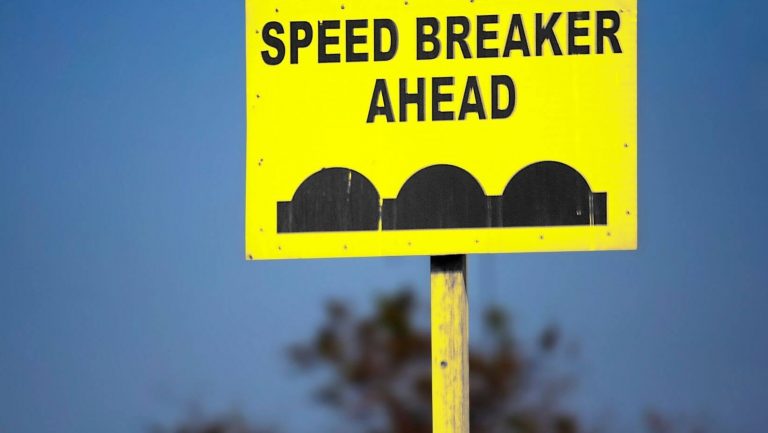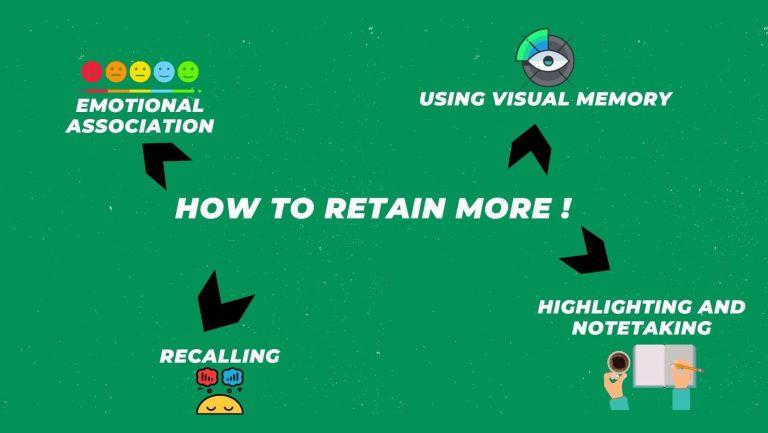Introduction
If you notice the autobiography of all the famous innovators globally, you will find that they spent a crucial part of their life learning and reading.
- Elon Musk read about two books per day
- Warren buffet spent 80% of his day reading
- Bill gates read about 50 books per year
Do you think it is a coincidence that these men are the leading innovators in the world right now? Obviously, not. Their fondness for reading & continuous learning helps them to reach the heights that they are at now.
So what if you could read at a much faster pace? What if you could double, triple, or even quadruple your reading speed. When you think of reading at that speed, you are probably worried about retention. But I can assure you that you can read faster and remember more if you follow some particular methods and techniques. These techniques are relatively easy but require a lot of practice for perfection.
How fast do you read?
According to research conducted by Staples, an average adult read about 300 words per minute.
To put this statement into comparison :
- Third-grade students = 150 words per minute
- Eighth grade students = 250
- Average college student = 450
- Average “”high level exec”” = 575
- Average college professor = 675
- Speed readers = 1,500
- World speed reading champion = 4,700
So if you are reading at speed below 300 wpm, you should definitely stick around to learn how to read faster than ever.

Check out your reading speed.
- Set the alarm to go off for one minute
- Read at your usual speed and stop when the alarm rings
- Count the total number of words in 5 lines and divide them by 5. This number is the words per line.
- Assess how many lines you have read. Multiply the number of lines by words per line.
This is your reading speed. Please do it now. Do not procrastinate on this task. Check your reading speed. If your reading speed is less than 300 words per minute, you have a lot of room for improvement. Don’t worry. I will teach you to read faster and remember more by the end of this article.
Barriers to speed reading

Belief:
One of the critical things that prevent a student from taking speed reading courses is believing it works. Speed reading works if you learn it the right way. But it would help if you had complete belief in it and believe that everyone can read like Elon Musk with some techniques and motivation.
Subvocalization:
Subvocalization generally means the voice in your head. When you read, you probably are saying each word out loud in your head. The reason is that we all have been taught to read that way. In primary schools, we have been taught to read loudly in front of the whole class. When we grow up, we still bear the habit but just in our heads.
One of the critical barriers to reading faster is subvocalization. You do not have to say each word out loud. Your brain can make sense of each word without subvocalization.
Re-Reading:
How many times in your life have you read a sentence, a paragraph, a page twice because you couldn’t understand its meaning? Re-reading or regression is an enemy of speed reading. The most common reason for regression is lack of focus and attention. When you read, I would suggest you read with an entire focus. Think as if your life depends on reading, then you will be much more focused and will be able to retain more.
Methods of speed reading:
Let us take a deep dive at first into the process of speed reading. We will discuss comprehension and retention later in the article.
Skimming :
One of the key features of a speed reader is knowing what to skim and how to scan. If you notice carefully, in a sentence, articles, conjunctions, prepositions are of no value in understanding a context. But yet we tend to read them just like any other meaningful words. Remember, your brain is your superpower, and it can easily make proper sense of a topic even without conjunctions, articles, and prepositions.
Practice the habit of skimming through these words. Evaluate the nouns, pronouns, verbs, and other words which provide value to a text.
Use a visual Tracker:
Yes. I know this is something we have left behind while we were in primary school. But regression & back skipping can be significantly minimized by only using a visual pacer. Try to use your fingers or a pencil to track your reading. This will significantly improve your reading speed because your eyes are much more bound to track a physical object, and re-reading is significantly prevented.
Use peripheral vision
If you start reading from the very first text, you lose a part of peripheral vision reading nothing. It might sound a little complicated, but your eyes can pick up a word even if you don’t directly look into it.
Let me give you an example :
Take a look at the sentence below –
“Speed reading is an efficient way to read more and learn faster.”
Try to focus your eyes on the word “is.” You will still be able to read the words “Speed reading.” This is your peripheral vision. Similarly, you can focus on the word “and,” but you will still be able to read “learn faster.”
Using peripheral vision is one of the vital speed reading techniques that Tim Ferris mentions in his podcast, blogs, and youtube. Now, this technique is crucial for speed reading, but it is also challenging to master.
Initially, you will face difficulties in reading like this. I would suggest you put margins on your page. Divide the page into three equal segments by three lines. When you start reading, focus on the linear lines and read the sentence using peripheral vision. This might take time, but it will be worth it.
Decrease Fixations
Our eyes don’t read linearly. They read through a sequence of saccadic movements (jumps or leaps). To put it into easy words, if you follow the movement of your pen, your eyes are going to make jumps to follow the course of movement. How is this knowledge going to help you in reading fast?
You can read much faster if you reduce the jumps you take per sentence. Now, this is also achievable through practice and effort.
Follow the exercise in the previous paragraph:
- Take a page full of text
- Put three margins and divide the page into equal segments.
- Focus on these lines while reading. Do not set your eyes on the first /last words of a line.
This is how you can reduce your saccades to minimize your reading time. Take a pen and do it now.
Now that you know all the main techniques of speed reading, it is time to put all of these to use
How to retain more information:
Now that you have learned speed reading, you still need to retain all that you are reading. This part is pretty easy compared to that of speed reading.
Here are some techniques that will help you to remember more information after speed reading:

Visual memory
Can you remember a movie that you saw when you were a child? Or a game that you played? Why can you remember information from the long past but can’t remember information that you read yesterday?
One of the main reasons is visual memory. When you watch a movie or live an experience, you have visual memories associated with it. That’s why they are easier to remember than simple words, sentences, or paragraphs. You can remember a book, a text, or a paragraph by visualizing the content. I know visualizing non-fictions can be challenging, but visualize how you will use these pieces of information in your life. This method will create a great connection between these words and memory.
Using Emotion
Another reason you remember a lot of things from your childhood is emotion. A lot of information is strongly tied to emotional sentiments. For example, the first toy your father brought you, your first visit to the zoo, your first stage performance, all these events are tied to happiness, excitement, and fear. No wonder you tend to remember this information even after 10-15 years.
One of the best ways to retain what you read is by connecting it to something emotional. It might sound tricky, but it is not. If you are reading a nonfiction book and you have come across an idea that you would like to remember, try to think about how this information can help you in life. Maybe This information can change the course of your life, or it can bring positive change to your life. Try to feel excited /happy about it. You are far more likely to retain information this way.
Recalling and Application
The best way to remember anything is through practical application. The second best way is active recall. After reading through a chapter in a book or reading a complete article, try to recall all the valuable information. If you cannot remember any information, look into the text and reread it. If you are speed reading, it will not take much time.
Also, try to apply what you learn in nonfiction. If you are only reading for the sake of reading, you are not enjoying the benefits of reading a book. Apply them in your daily life, and you will permanently retain this information in your brain
Highlighting and note-taking
This technique is not highly suggested because, most often, readers don’t revisit the notes. But if you are a person who is willing to revisit a book, topic, article, then you should definitely start taking notes or highlighting while you read.
You can take notes in your favorite note-taking apps because handwritten book and article notes are more likely to be lost.
Speed reading misconceptions
Myth 1: Speed readers don’t comprehend well
Speed reading is a habit that you must develop over time. After a considerable amount of time, it will become your average reading speed. Then you don’t need to think of comprehension anymore.
When you were a child probably your reading speed was about 60 words per minute. Now it is probably around 250-300 wpm, almost five times that of childhood. Did you have any problems with comprehension? Of course not. But why? It is because now this has become your average reading speed, and you don’t have to worry about it. Just keep the practice going.
Myth 2: Speed readers cannot appreciate reading:
People who know nothing about speed reading consider it as skimming through the text. They do not realize that speed reading is the same as that of reading but only faster. There is no reason that speed readers cannot appreciate reading.
Myth 3: Speed Reading is impossible
Earlier, we mentioned Elon Musk used to read two books a day; now, if he was reading at 250 wpm, could he finish two books of 250 pages per day? No. He was reading at a much faster pace than all of us. Speed reading takes practice, but it is not impossible.
Speed Reading Apps to read faster and remember more
This is not a necessary step, and you can learn speed reading without using any app. But if you are a person who is more likely to read on their Tablet & Phone, then here are some apps that can help you.

Wrapping up
Look, I am not saying speed reading is a piece of cake, but it is possible. If you are a life-long learner, speed reading could be one of your superpowers. This skill will help you to learn anything faster than ever. Try to practice all the methods shown above. Also, don’t give attention to all the myths. I know there are hundreds of videos and articles on the internet that promote those myths.
I have tried these techniques myself, and I can certainly assure you it is possible. Hope this article helps you too. Best of luck!


